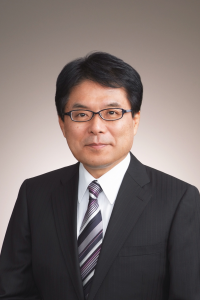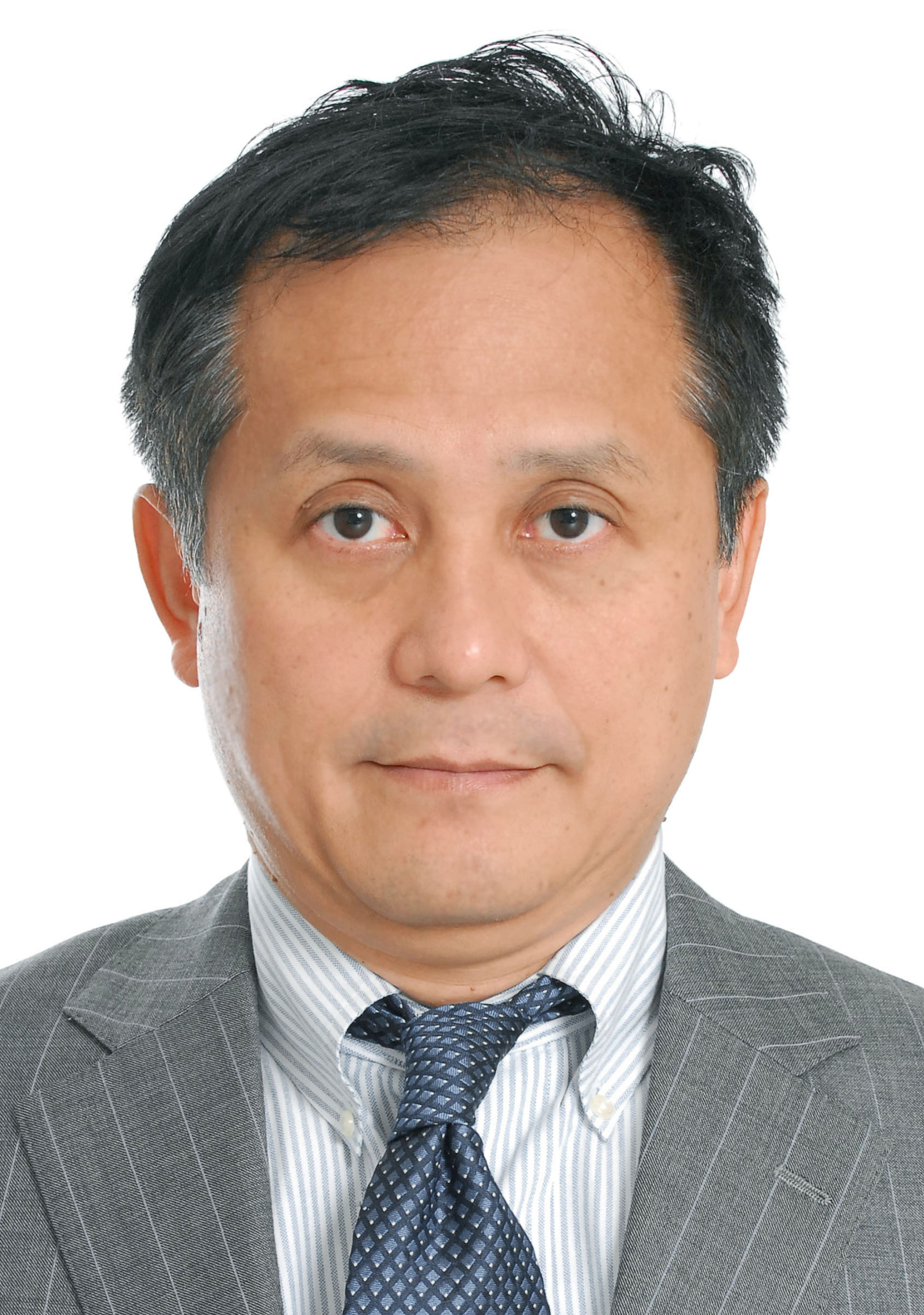Why Are There So Few Women in Science?

The mathematics scores of Japanese high school girls are extremely good compared to the rest of the world. Regarding this situation, the author points out, “In addition to the image that “mathematics is not suitable for girls,” there is a stereotype that “physics is not suitable for girls,” which is likely to reduce the selection rate of physics as an examination subject and, as a result, the application rate to science and engineering.”
Photo: metamorworks / PIXTA
Japan’s proportion of women in science and engineering at the university level is the lowest among OECD countries. In engineering, manufacturing, and architecture, fields in high demand by companies, only 16% of students are women, compared to the OECD average of 26%, and in science, mathematics, and statistics, only 27% are women, compared to the OECD average of 52%. The mathematics scores of Japanese high school girls are extremely good compared to the rest of the world. Why, then, do Japanese high school girls who excel academically not go into science?
Of course, there are excellent female students with high academic ability who do choose to go into science. But many of them choose the medical field. In Japan, doctors are highly paid and have a stable position as a respected profession. In pharmacy, too, even if there is a career interruption due to a life event, it is possible to return to work because it is a skilled job. Parents and others think in this way. In other words, women consider it difficult to work in general companies, so they tend to be skill-oriented. Science and engineering jobs are perceived to be jobs for men, and the nature of the work is not well known. In reality, however, the areas of science and engineering for which workers are in high demand include computer science and engineering, and mechanical engineering.
Of course, with a declining population, the wisdom of young people is needed for Japan’s growth and innovation. To improve the gender balance, companies hope to hire women in science and engineering, but the absolute number of candidates is small. In this situation, the search for a “recruitment quota for female university students” and other such programs has begun. However, in the midst of a movement to rapidly change the distortions of society, the parties involved seem to think that structural reform is about changing appearances, which the author believes is not a very essential reform. Can such changes be called social justice, and will they bring happiness to the people involved? This paper examines the reasons why there are so few women in the sciences and discusses possible actions that can be taken.
1. What is the problem with the lack of women in science and engineering?
In the science graduate school lectures at the University of Tokyo where the author works (Hongo Campus, Bunkyo-ku, Tokyo), male students often ask, “What is the problem that there are so few women?” There are two intentions behind this question.
One is, “What is the problem with female students who have not chosen science as a career of their own volition?” The other is, “Is the lack of women in scientific research and in the workplace a disadvantage to society?”
Let’s consider the first question. In a lecture at the College of Arts and Sciences at the Komaba Campus of the University of Tokyo (Meguro-ku, Tokyo), a female student said, “I certainly got good grades in math and physics, but I never seriously considered going into science. I thought that women naturally belong in the humanities.” In other words, the impression that women belong in the humanities is so strong that female high school students who want to go to the University of Tokyo do not even consider science.
Although they are called STEM (science, technology, engineering and mathematics) disciplines, the field is broad. If some science departments, such as the Faculty of Engineering, the Faculty of Science, and the Faculty of Agriculture, can be roughly categorized into physics, chemistry, and biology—subjects that are part of the entrance examination for science majors—it is the biology department that has a relatively higher number of female students, followed by the chemistry department. However, in the fields of mechanical engineering and electrical engineering within the Faculty of Engineering, as well as in mathematics, physics, and information science and engineering—which have a background in physics within the Faculty of Science—there are very few female students. Similar situations are observed in Western countries, but interestingly, mathematics is classified as a field with a relatively high number of female students, just like biology and chemistry.
As we still often hear that “science is male and humanities is female,” there may be a strong gender image in society depending on the academic field. The author’s research group thought so and measured the gender image of university medicine, pharmacy, physics and mechanical engineering. The results were very clear, and the top field considered suitable for women is nursing, followed by pharmacy. After music, art, dentistry and medicine, we come to the humanities and social sciences. At the bottom of the list is mechanical engineering, followed by physics. In contrast, the fields considered more suitable for men are, in order from the top, mechanical engineering and medicine, followed by dentistry, mathematics, law, political science, and physics. At the bottom is biology, and second from the bottom are humanities and social sciences.
The authors also measured each respondent’s gender equality using a 15-item short form of the Scale of Egalitarian Sex Role Attitudes (SESRA-S), a psychological measure of gender role attitudes designed to measure parental attitudes. The results showed that parents with lower gender equality attitudes tended to have stronger gender images of academic fields, such as “mechanical engineering is for men” and “nursing is for women.” In a society composed of people with such attitudes, it is not hard to imagine that female students who want to go to university would find it difficult to choose mechanical engineering or physics.
The second question is whether there are disadvantages for society in having fewer women in science. From the point of view of university professors, the small number of women means that half of the potential talent is lying dormant, and we really want them to come and study science in order to revitalize research. It is important to emphasize that “abilities unique to women” are not expected. The diversity in research comes from the differences in individual researchers’ ideas. In fields such as mathematics or physics, there is no difference in handling equations based on gender. One area that requires attention in the discussion is the field of technology development concerning the well-being of women’s bodies, known as “Femtech.” Since the research subjects in this field are women’s bodies and lives, being a woman is considered an advantage. However, in the broader field of science and technology, it is not about seeking something unique to women. There may be voices suggesting that female engineers can develop cars or kitchen appliances that are easier for women to use. However, such thinking is rooted in the very gender role division that presupposes childcare and housework as women’s responsibilities.
The discussion that the power of women and international students is necessary for the development of science and technology in Japan has been going on since 20 years ago, when the Ministry of Education, Culture, Sports, Science and Technology started a program to support female junior high school students to study science. The idea that “we need to increase the number of women because we no longer have enough men” is not the way things should be. It is important to move away from this way of thinking and to continue the discussion.
2. Free yourself from the threat of “math stereotypes”
There is a saying that “men are naturally better at math.” This is nothing more than a math stereotype based on a false assumption. Research shows that this stereotype starts around the age of five or six. In other words, the stereotype is already in place by the time people start studying math, so it can be said that it is difficult to measure aptitude without stereotyping.
However, many researchers are skeptical about the existence of math stereotypes, believing abstract discussions about aptitude for subjects like math and arithmetic are not determined by innate gender differences, but rather by individual characteristics. In addition, they believe that environmental factors, including peer influences, also play an important role. In a society steeped in stereotypes, it is natural, if you have stereotypes yourself, to think that math is for boys, so girls don’t have to work hard. Even if no differences are observed during the elementary school years, it cannot be denied that such attitudes become more pronounced as children reach adolescence and begin to become aware of their gender.
The authors presented abilities considered important for science students, such as “logical thinking ability,” “calculation ability,” “ability to make quick decisions,” “ability to think deeply about things,” “rich knowledge,” “memory,” and “ability to understand social needs,” and measured and compared the gender image of each in Japan and England. In both countries, “ability to think logically” and “ability to calculate” had a more masculine image. However, the overall image was much stronger in Japan, confirming that many people believe these skills belong to men. This study also measured math stereotypes, and while a high percentage of people in England clearly denied the existence of math stereotypes, a high percentage of people in Japan did not deny them. In other words, many people in Japan believe that the skills required for mathematics, and by extension science, are masculine skills.
Some research has shown that students try to conform their behavior to these social stereotypes. In other words, the misconception that women are not suited for science and engineering is deeply rooted in Japanese society, and it is highly likely that female students unconsciously absorb this image and behave accordingly. A well-known study in this area has also reported that making female students aware of their gender before they take a test lowers their scores. A Japanese study found that when students were given gender-conscious remarks that at first seemed like compliments, such as “That’s amazing for a girl,” their scores were lowered.
It has also been reported that this math stereotype is even stronger in developed countries with advanced math education. In addition, Asian countries such as China, Korea, India, and Japan have entrance exams that focus on scores, and the fierce entrance exam wars have become a problem. Perhaps that is why these countries have good math scores. It is noteworthy, however, that the ratio of male and female students in top high schools in China and Korea is almost half and half, respectively. In addition, in Nordic countries such as Finland, Norway and Sweden, female students have better math scores in PISA (Programme for International Student Assessment: OECD survey of student achievement).
The reason why math stereotypes are problematic is that they are likely affecting students’ choice of high school subjects, particularly physics, which is essential for fields in high demand within science and engineering, such as mechanical engineering and information technology. The Ministry of Education, Culture, Sports, Science and Technology does not publish the subject selection rate by gender, so the exact figure is unknown, but the rate of physics selection among female students is very low. Depending on the school, it may be difficult to choose physics. Furthermore, there are voices from high schools saying that if they want female students to go to engineering departments, they should stop taking the physics exam. In addition to the image that “mathematics is not suitable for girls,” there is a stereotype that “physics is not suitable for girls,” which is likely to reduce the selection rate of physics as an examination subject and, as a result, the application rate to science and engineering.
In a study of high school teachers conducted by the authors (to be published soon), it was found that many teachers encourage boys to take physics, but not girls. The rationale for recommending physics to boys is that choosing physics in science opens up a range of options, including engineering, and the results show that it helps students have a better chance of getting into higher level university.
In Japan, there are many studies that indicate that female students become disinterested in physics when they study science in junior high school. Even if there is no difference in ability between boys and girls, there are differences between boys and girls in how they learn, their attitudes when they learn, and the environment in which they learn. It is necessary to create an environment in which female students can learn mathematics and physics with confidence.
3.There is a high demand for information on physics and human resources for mechanical engineering
It is symbolic that biology was the lowest ranked academic field suitable for men, as mentioned above. The majority of biology professors at the University of Tokyo are still male. However, the percentage of female students studying there is different. In graduate schools, the percentage of female students exceeds that of male students in biology majors. Looking at the national percentage of female students, the Department of Biology ranks first among science faculties.
This is due to the fact that female students are attracted to biology itself, as well as the existence of industrial fields that are more familiar and attractive to female students as a career path after graduation, such as food and cosmetics. Although the human resource needs of companies are overwhelmingly focused on information technology and mechanical engineering, both of which are physics-based, this is not fully communicated to schools. Green transformation (GX), which corresponds to digital transformation (DX), is a powerful term that encompasses many fields related to the entire economic and social system, with a focus on natural energy. However, there are not many jobs available in Japanese companies in the environmental field, which is considered one of the core fields of GX.
Computer science majors do well in the job market after graduation, but few go on to master’s programs at graduate schools. Top students tend to find employment in startups, and even large companies seem to have difficulty attracting talented students. However, the number of women studying computer science and engineering is not increasing. Recently, the Kyushu region has focused on developing human resources in the semiconductor industry. The author serves on the board of directors of the National Institute of Technology (NIT), a national organization of technical colleges, and students from technical colleges (Kosen), which can produce so-called “ready-to-use” personnel, are in high demand by companies, and NIT is working to increase its human resources. Even at Kosen, the percentage of female students in mechanical engineering is low, but overall it is increasing and has now reached 25%. This may be an example of how it is possible to increase the number of women in higher education if there is job security, even in engineering fields.
4. The impact of family and community on gender inequality
The fact that the Gender Gap Index (GGI) in Japanese society is very poor has been widely reported in the media and is well known. However, progress has been slow and the effects are worrying in all areas. Here we will look at the causes in the order of high school students themselves, their parents, and society.
First of all, in a space filled with old values, it is natural that female students will tend to do so (follow old values) if it is considered good to follow them. It is known that the more female students agree with the question often used in surveys, “Men should work outside and women should take care of the home,” the lower the rate of going into science-related fields. Also, even if Japanese female students are considering going to university, they may not be considering economic independence by continuing to work for the rest of their lives. There are students at our university who want to be full-time housewives. Of course, everyone has his or her own way of life, but it is necessary to cultivate the consciousness of working independently in order to live freely. In this case, it should be advantageous to study science-related subjects, where it is easy to acquire specialized knowledge.
Next, we look at mothers, who are thought to have the strongest influence on female students’ career choices. When mothers do not disagree with the math stereotype that “women have lower math ability than men,” their daughters are less likely to pursue science-related studies than daughters whose mothers disagree with the stereotype. The influence of mothers is a topic of discussion not only in Japan but around the world. According to data from the United States, when mothers rate their children’s mathematical abilities on a seven-point scale, the likelihood of sons pursuing a career in physics increases steadily as their score rises. However, for daughters, until their score reaches three, the chances of pursuing physics are almost completely suppressed. It is only when their score reaches seven that their likelihood of pursuing physics matches that of sons. In other words, the correlation between mothers’ assessments of their children’s mathematical abilities and their progress in physics courses is significantly different for boys and girls.
When the author talks about this, some people say that in order to increase the number of women in science, we first need the understanding of mothers. Of course, the cooperation of mothers is essential, but we must carefully consider why mothers cannot send their daughters to study science like their sons. Many mothers have already worked and have faced difficult working conditions in the workplace. Therefore, mothers have been worried about whether their daughters will be able to work enthusiastically for a long time after graduating in science and engineering and joining a company. Therefore, instead of blaming mothers for their daughters’ choices, it is necessary to first improve society and the work environment.
Next, let’s look at the influence of fathers. In fact, in Japan, fathers in science are not able to show their daughters the benefits of their career paths. In other words, while sons with fathers in science are more likely to go into science, this has no influence on daughters. This is a serious difference compared to other countries.
5. Understanding the big picture of women’s progress in science
Let’s summarize the big picture. The author’s group has conducted various studies on the assumption that the masculine image of engineering, information science and technology, mathematics, etc., prevents female students from advancing to higher education. Based on a paper on social psychology in the United States, we conducted a comparative survey of England and Japan, taking into account factors of social climate. As a result, it was found that the factors that have a strong male image of mathematics and physics are “male image of employment” and “mathematics stereotype.” Unless these two factors are improved, female high school students will not advance to the sciences. Furthermore, it was found that the image that people who study mathematics and physics are excellent is associated with men, and the more people have the image that mathematics is male, the more negatively they view “excellent women.” In short, it was found that “the realization of a society in which women’s active participation is welcomed” is the most important thing. In order to refresh this research, the author’s group is conducting research with educational psychologists in Finland. At the same time, the author’s group has also started research by prefecture, triggered by the fact that there are large regional differences in Japan, and the Gender Gap Index (GGI) has been calculated by prefecture. Surprisingly, the more gender equality has been achieved in a country, the fewer women there are in science and engineering, which has been called the STEM gender paradox. The prefecture research will also help to confirm whether this phenomenon occurs in Japan.
It is pointed out that the presence or absence of exemplary women in science and engineering (role models) is important for gender equality. However, stereotypes such as “the image of men in the workplace,” “stereotypes about mathematics,” and “excellence is for men” still exist in Japan, so the effect of role models is still limited.
When the above results were announced at Oxford University, those involved were very surprised by the content. In other words, they were surprised by the fact that “excellence is for men, and we have a social climate where excellent women are not welcome.” It is natural that women are welcomed when they fully demonstrate their abilities, and this is common sense in developed countries. In Japan, however, “excellent women” have not been well received. I think this is related to the question of why there are so few women in top universities.
It is important to dispel the male image so that such research and discussion will make it easier for female students to go into science. To achieve this, the author thinks it is important to disseminate three pieces of information. The first is to improve the situation in which recruitment itself is based on a male model, and companies need to further reform their image of themselves. The second is to eliminate the mathematical stereotype. It is necessary to convey at all levels that there are no gender differences in ability, not only in primary and secondary education, but also beyond. The third is to reform the social climate to support women in science and engineering and to welcome their active participation in the field. I believe these three things will be important in attracting female students to science and engineering in the future.
6. “Female quotas” and the future of Japan
As mentioned above, it is the overall social climate that discourages female students from entering science. However, there are also strong voices saying that structural reform is necessary to change the social climate. In particular, it is difficult to change the entire entrance examination system, which is basically determined by grades, and more and more universities are introducing the “female quota” and “women’s quota” that we see these days. Can you call that social justice?
The introduction of quotas for women is intended to convey that universities welcome female students, but the author’s concern is that it could be seen as a completely opposite message, such as “female students do not have the ability, so we will provide a separate quota.” It has also been pointed out that it embeds a stigma that girls were only accepted because they were girls, and prevents them from developing freely thereafter. The angry criticism that this is discrimination against women and a lack of faith in women’s abilities is certainly justified. In the first place, the constant voices that say that setting quotas for women is discrimination against men stem from the unnaturalness of trying to solve the problems of inequality that have built up over the years by shifting them to the present.
As we have seen, a major concern for high school girls in choosing a career path is finding a job. Girls have few opportunities in their daily lives to learn about the types of work that is done in science and engineering companies, what are the current interesting topics, and other such trends. Despite the existence of the Internet, such information does not seem to be disseminated on YouTube or Instagram, which students watch. Ideally, it would be appropriate to encourage companies to disseminate information aimed at high school girls, and to take steps to address concerns about girls’ abilities while promoting social climate reform to increase the absolute number.
The old and new question “Why are there so few women in science and engineering?” is entering a new phase. Because this is a complex issue, it would be more tolerant to work on improving the basic social climate rather than pinning our hopes on one particular thing. We have reached a point where we need a society-wide discussion on this issue.
Translated from “Rikei-josei wa Naze Sukunai (Why Are There So Few Women in Science?),” Sekai, September 2024, pp. 66–73. (Courtesy of Iwanami Shoten, Publishers) [October 2024]
Keywords
- Yokoyama Hiromi
- Kavli Institute for the Physics and Mathematics of the Universe
- University of Tokyo
- women in science
- female students
- female quotas
- STEM
- engineering
- mathematics
- physics
- high school
- university
- career
- gender role
- gender equality
- Scale of Egalitarian Sex Role Attitudes
- SESRA-S
- math stereotypes
- influence of mothers
- National Institute of Technology
- NIT
- technical colleges
- Kosen
 Yokoyama Hiromi, Ph.D.
Yokoyama Hiromi, Ph.D.



